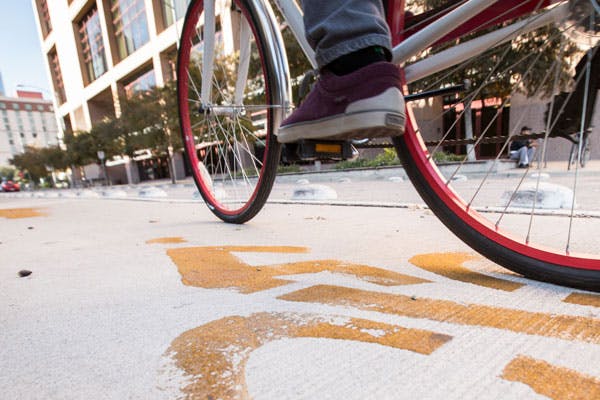Bike Rider Safety: Thoughts on the National Transportation Safety Board Recommendations
By: PeopleForBikes Staff

Bike rider safety moved to the front of the national transportation policy debate in November 2019 when the National Transportation Safety Board (NTSB) commissioned its first study on bicycling safety in 47 years.
Although the NTSB does not have the authority to enact or enforce policy, other agencies pay attention to its recommendations. The NTSB expanded on the study’s findings by identifying five areas for future focus.
- Strengthen Bike Networks: The NTSB recommended that the Federal Highway Administration and the American Association of State Highway and Transportation Officials incorporate separated bike lanes and intersection safety treatments into all guidance materials.
- Improve Technology: The NTSB recommended that the Intelligent Transportation Systems Joint Program Office, the National Highway Traffic Safety Administration, and the Federal Highway Administration expand vehicle-to-pedestrian research efforts to ensure that bike riders and other vulnerable road users will be incorporated into the safe deployment of connected vehicle systems. The NTSB also asked the National Highway Traffic Safety Administration to evaluate a car’s ability to avoid crashes with bicycles into the New Car Assessment Program.
- Increase Rider Visibility: The NTSB recommended that the U.S. Consumer Product Safety Commission conduct an evaluation to determine whether bicycle conspicuity (visibility) could be improved by modifying the reflector requirements for bicycle manufacturers.
- Require Bike Riders to Wear Helmets: The NTSB recommended that the National Highway Traffic Safety Administration convene a bicycle safety coalition of stakeholders to develop a comprehensive national strategy to increase bicycle helmet use that would include, at a minimum, a model all-ages bicycle helmet law. The NTSB also recommended that all 50 states require that all persons wear an age-appropriate bicycle helmet while riding a bicycle.
- Collect Better Data: The NTSB recommended that that Federal Highway Administration develop methods to combine traditional and innovative bicycle-counting approaches that capture bicycling activity data generated by individual riders and bikeshare operations.
PeopleForBikes’ mission is to make every bike ride safer, more accessible and more fun. We applaud the NTSB for raising the profile of bike rider safety at the federal level. We are most encouraged by the NTSB’s recommendations around building more and stronger bike networks that include separated bike facilities and improved intersection treatments. We also support recommendations to enhance bicycle-to-vehicle detection and communication.
However, we are disappointed at the NTSB’s focus on mandatory helmet laws for three simple reasons:
- Although helmets can mitigate the severity of crash-related bicycling injuries, they don’t stop crashes from happening in the first place.
- Helmet requirements have the potential to reduce both actual safety and perceived safety among bike riders. For example, there is evidence that mandatory helmet laws discourage people from riding. To the degree that there is a safety-in-numbers effect, helmet laws could result in less safe conditions for those who do continue to ride.
- As our partner the Better Bike Share Partnership has noted, inequitable enforcement of helmet laws could discourage active transportation. Recent research suggests that there are a greater number of official incidence reports and citations filed against black than white people on bikes in U.S. cities. Taking a line from the National Association of City Transportation Officials (NACTO), “while bike helmets can be protective, bike helmet laws are not.”
We have always endeavored to make every bike ride better, and a key part of that is safety. We’ve strongly advocated for bills like the Vision Zero Act. We’re working with a growing list of partner cities in the Big Jump Project, accelerating progress on their protected bike networks. Our Community Grant Program helps fund local projects to grow youth ridership. We continue to expand our City Ratings to aid cities in evaluating their bike networks and planning for their futures.
At PeopleForBikes, we focus our energy on solutions that prevent crashes and enhance safety for all road users. We encourage federal, state, and local agencies to do the same.
